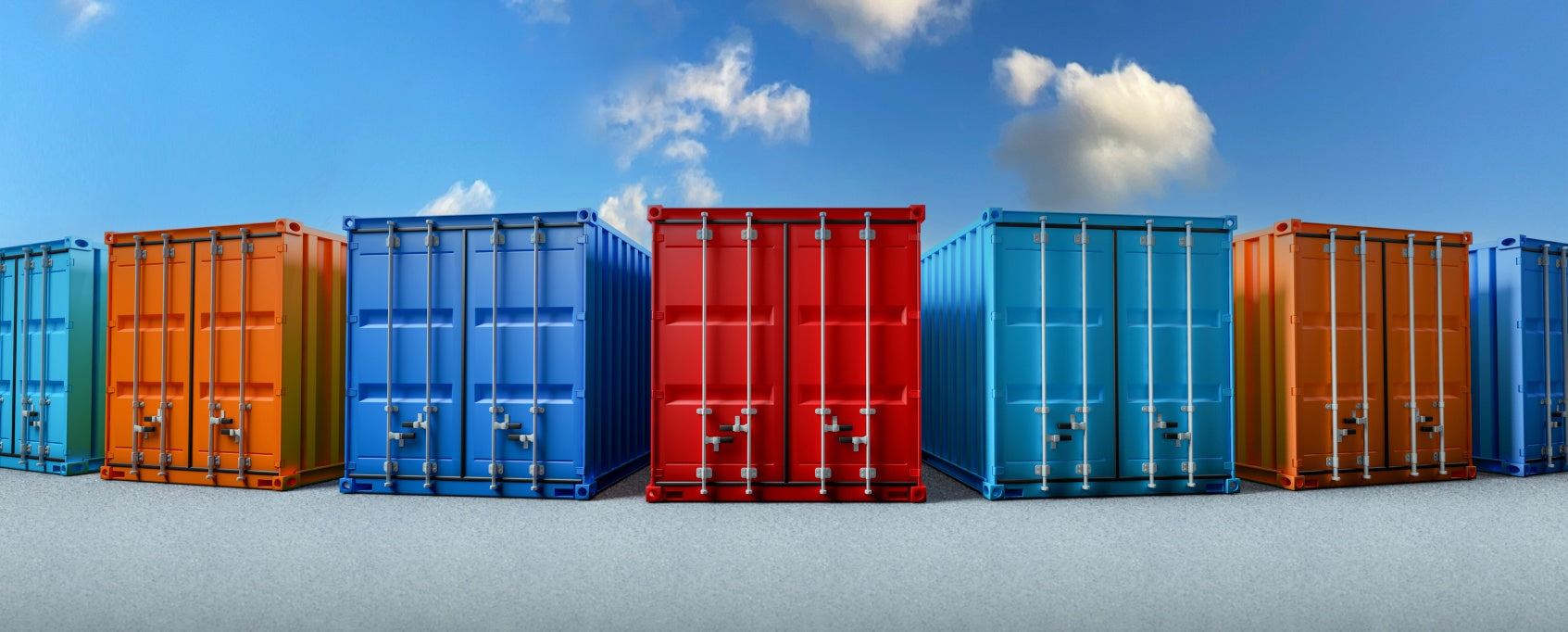
How Much Can You Fit in a 20-Foot Container?
Whatever belongings you’re looking to store, it’s good to know just exactly how much you can fit in a 20-foot container. If you’re a homeowner or a business owner, you'll probably need to use this type of storage space at some point in your life.
With that in mind, you may want to plan ahead and see just how much space you’ll be working with. That’s why we’ve put together this guide on how much volume there is inside a 20-foot container, and what the average person or business can fit inside it.
Looking for a storage container to rent? We offer simple and secure container storage in Nottingham – enquire with us today.
20ft container dimensions
A standard 20-foot container has the following dimensions:
- The external dimensions are: 20’ long x 8’ wide x 8.6’ high (6.06m long x 2.44m wide x 2.59m high).
- The internal dimensions are: 19’ 4” long x 7’ 9” wide x 7’ 10” high (5.90m long x 2.35m wide x 2.39m high).

From these dimensions, we can work out the available floor area and volume inside a 20-foot storage container:
- The available floor area is around 14.86m² or 160 square feet.
- The internal volume is around 33m³ or 1165.38 cubic feet.
- It’s worth noting that not all of the internal volume is usable – the actual volume of usable storage space will typically be around 28m³ or 988.8 cubic feet.
So, now you know that the usable space inside a 20-foot container will typically be around 28m³. But this still doesn’t explain how much you can fit inside. Below, we’ve highlighted the different items you can store with this volume of usable space.
How much can you fit into a 20-foot container?
You can fit a variety of items into a 20-foot container. It’s the perfect capacity for the contents of a 3-4 bedroom house. You can fit a large amount of furniture, a fair amount of boxes and even the family bikes too!
Of course, this list is not exhaustive! You can fit a mix and match of items from your home or business in a 20-foot container. And whilst the volume of a storage container is useful, it can be difficult to imagine what you can fit inside it, so we’ve got a handy illustration to help you visualise this below.

How many boxes fit in a 20 foot container?
If you’re a business with excess items or you’re packing up your house, it’s useful to know how many cardboard boxes you can squeeze in.
We’ve done some calculations and found that you can fit a maximum of 311 cardboard boxes into a 20ft container. However if you’re a business looking to store smaller archive-type containers, you’ll be able to fit in around 933 average-size archive boxes.
Of course this capacity depends on the variety and sizes of your boxes. If you have the perfect stacking ability, you could fit 311 boxes. But it's more likely you could fit anywhere from 200-300 boxes into the container if you’re not a stacking pro!
Our calculations for these figures are listed below for full transparency, and so you can do your own calculations if need be.
Household box calculations
45cm x 45cm x 45cm = 0.09m³
28m³ ÷ 0.09m³ = 311
Archive box calculations
12cm x 15cm x 10cm = 0.03m³
28m³ ÷ 0.03m³ = 933
Bear in mind that we wouldn’t recommend storing boxes of business documents in a container – a secure document storage service is the ideal option if you are looking to store files.
How much furniture can fit in a 20-foot container?
As shown in the illustration above, a 20-foot container is the perfect capacity for the contents of a typical 3-4 bedroom house. If you packed correctly you could fit in the following furniture:
- 2 double beds & mattresses
- A three seater sofa
- A single bed & mattress
- An armchair
- Dining table and chairs for four people
- TV
- Stereo system
- Wardrobe
- Desk and office chair
- Fridge freezer
- Dishwasher
- Washing machine
- Microwave
- 1 Lamp
- 4 bikes
- A motorbike
On top of this furniture, you’ll be able to store a selection of cardboard moving boxes as well as some additional miscellaneous items. Again, this depends on your packing and stacking abilities!
How to pack and load your belongings
Before you pack and load your belongings for self storage, the right preparation will save you lots of time and effort overall. It’s a good idea to make an itemised list of your belongings so that you have a clear picture of everything that you’ll be storing.
With larger items of furniture, you’ll be able to maximise your space by dismantling them where possible. For any of these bulky items, make sure they’re placed at the back of the container first. Utilise any space on top of these by placing smaller, less important items on top of them.
Pack any other miscellaneous items in cardboard boxes, and wrap any delicate items with bubble wrap and packing peanuts (we have a packaging shop that can provide these if needed). Make sure the heavier boxes are below, with the delicate boxes on top to avoid any breakages.
If you’re storing your household goods for a long time, it's a good idea to draw up a quick map of where your items are placed in the storage container. This will help you remember where you’ve stored everything when it comes to collecting your items.
When you take your belongings, have a friend or family member with you so that you’re not doing all the heavy lifting. And finally, remember to give yourself a small walkway into the middle of the container so that you can move in and out easily.
Plan your self storage solution
We offer affordable 20-foot container storage units in Nottingham with a range of security measures to keep your items safe and sound. We also have a handy self self storage size estimator for you to find out exactly how much space you need for your belongings.
For more information, or to start planning your storage, get in touch with a member of our friendly team.

